It is easy to see why Lord Byron, the sixth Baron Byron, used to take walks from his nearby Newstead Abbey around the Notts property for it is most pleasant rolling country offering a variety of striking colours. There are few golf clubs which can boast of the bountiful beauty and breadth which Notts possesses. The course covers some 330 acres and another 100 or so surrounding acres! The size of the property affords for the making of a brawny course which Notts most certainly is, but the beauty adds an element of charm which must be seen to fully appreciate.
Formed in 1887 when there were fewer than 50 golf clubs in England, Notts moved to Hollinwell and in 1901 engaged Willie Park Jr to design a new course. Park Jr must have been a very busy man that year because he was also working on two other land mark designs, Sunningdale Old Course and lesser known Huntercombe in the Chilterns. Next year the great JH Taylor and T Williamson designed a bunker scheme which enhanced the challenge and elegance of Notts and made other significant changes to the routing. The final piece of the puzzle was the glaring alterations made by the unheralded Tom Williamson in 1913. He designed the opening three holes marooned on the far side of the entrance drive, and the 6th, 13th and 17th. He also altered the hole sequence and direction of many holes. Some may wonder who is this Tom Williamson. It is an unfortunate accident of history that he doesnít get his due as a tremendous servant to the game. Tom Williamson pulled off the remarkable feat of playing in every Open bar one between 1897 and 1947, serving as professional/greenkeeper/clubmaker at Notts for over 50 years and designing or having a hand in designing at least 50 courses; surely a CV which merits attention.
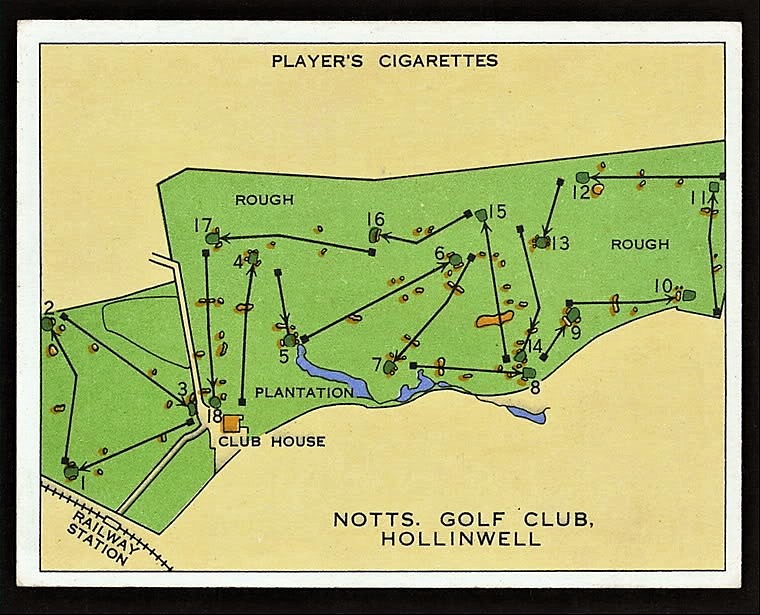
1935 Map.

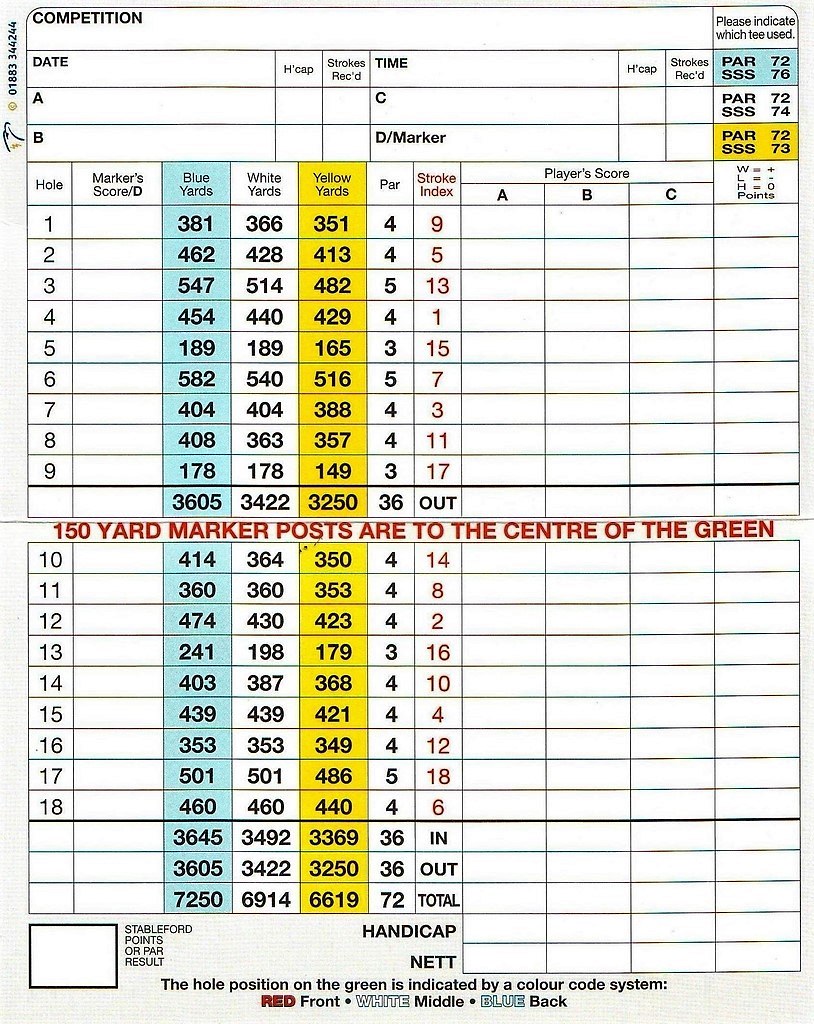
A brilliant Tom Williamson designed scorecard come course planner circa 1930.

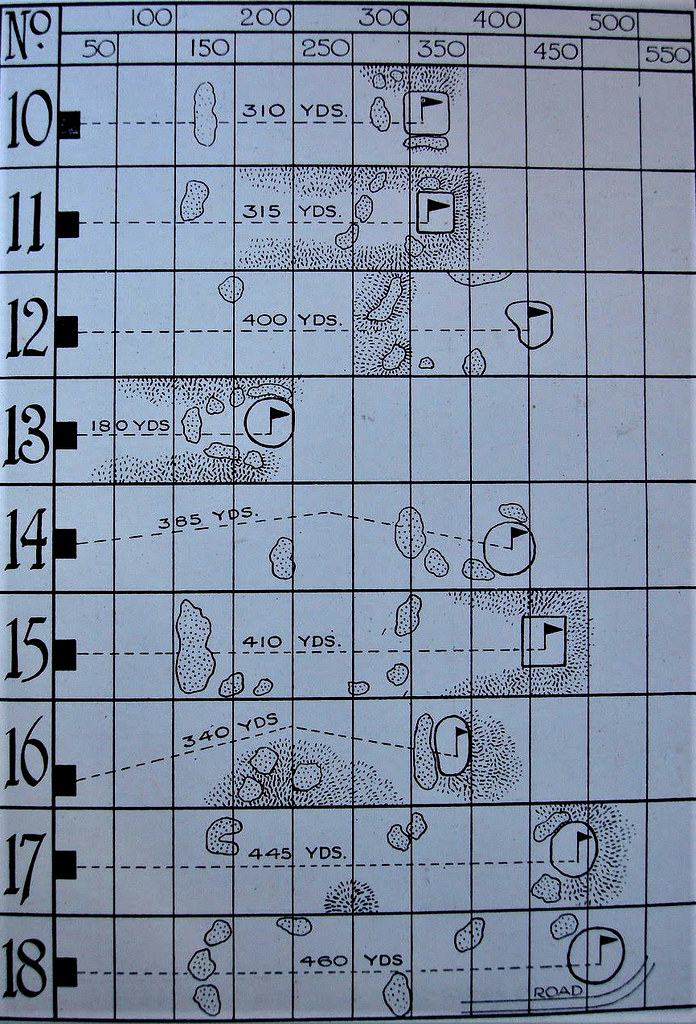
The opening three holes form a loop back to the house. After a gentle handshake first (which produces an inordinate number of bogeys) the course kicks into high gear on the 2nd. The hole legs sharply left around a hill which forms a holler. The difficult to hit green is neatly nestled in the horseshoe below a rock outcrop known as Robin Hoodís Chair. Many will prefer to drive the ball right in the hope of gaining a view of the green for the approach.
#1 - short par 4 opener.
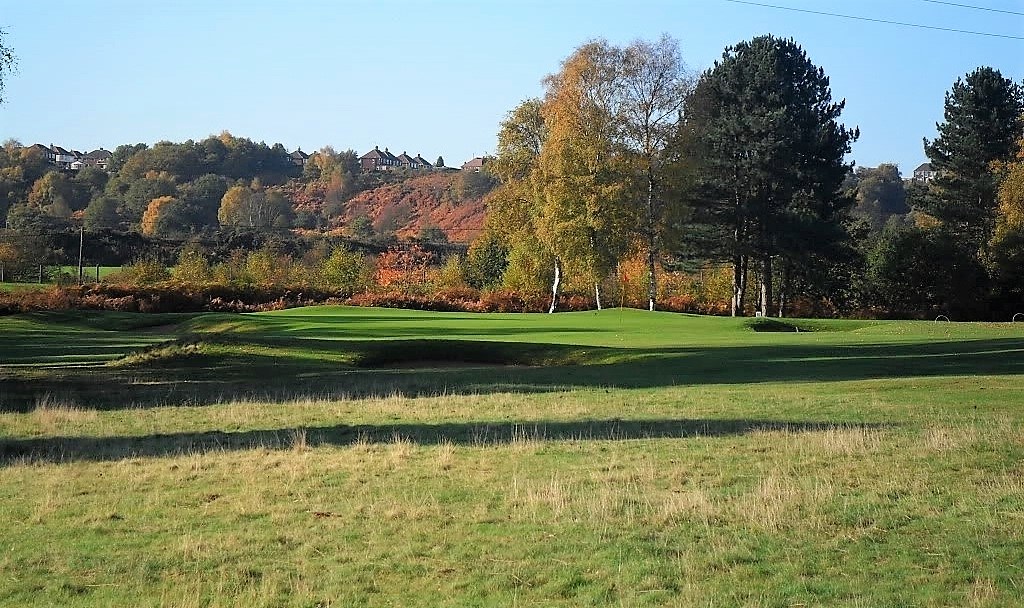
2nd - brutal par 4.

Approach from right side of the fairway.
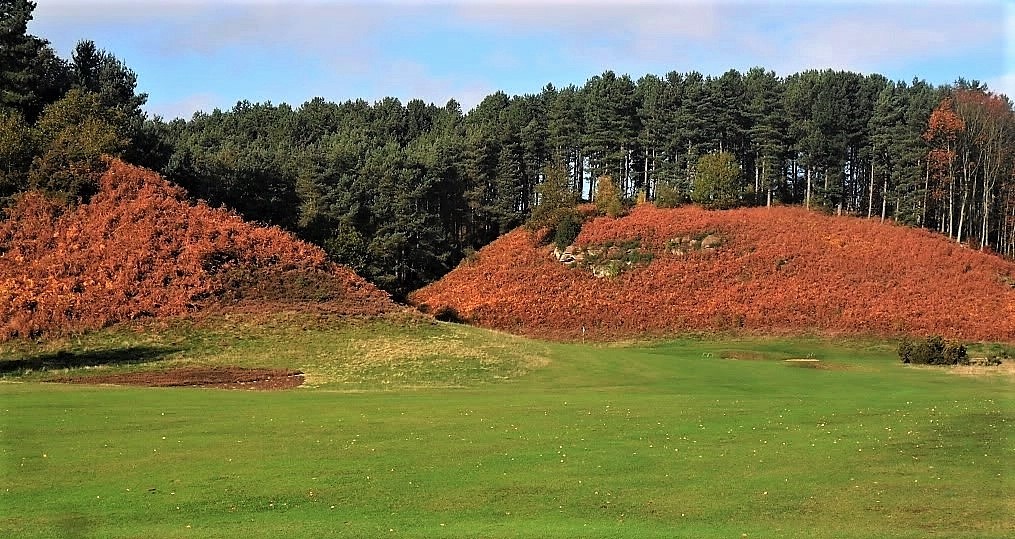
The lovely third may present the most engaging shot in the round...if one hits a good drive. The long downhill approach is enticing, dangerous, dramatic and the first of several thrilling shots. I notice a bank of gorse has been removed beyond the right fairwsay bunker. This sort of work has been ongoing for several years.

Many a golfer may find oneself on the road with no free relief or worse, across the road. Behind the green.
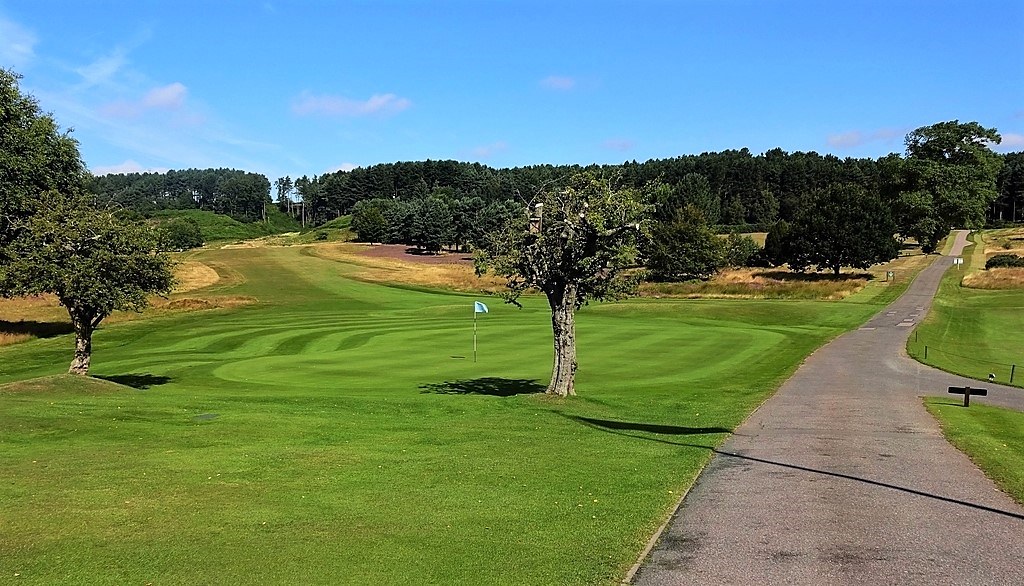
The sign may as well read to the 4th.

With a sense that we shall now well and truly strike into the heart of Notts, the bruising 4th awaits. At a formidable 429 yards and gorse hard left of the green this hole isnít for the weak. The approach short of the left fairway bunker.

The short 5th has been recently enhanced by newly created natural sandy scrapes near the tee.
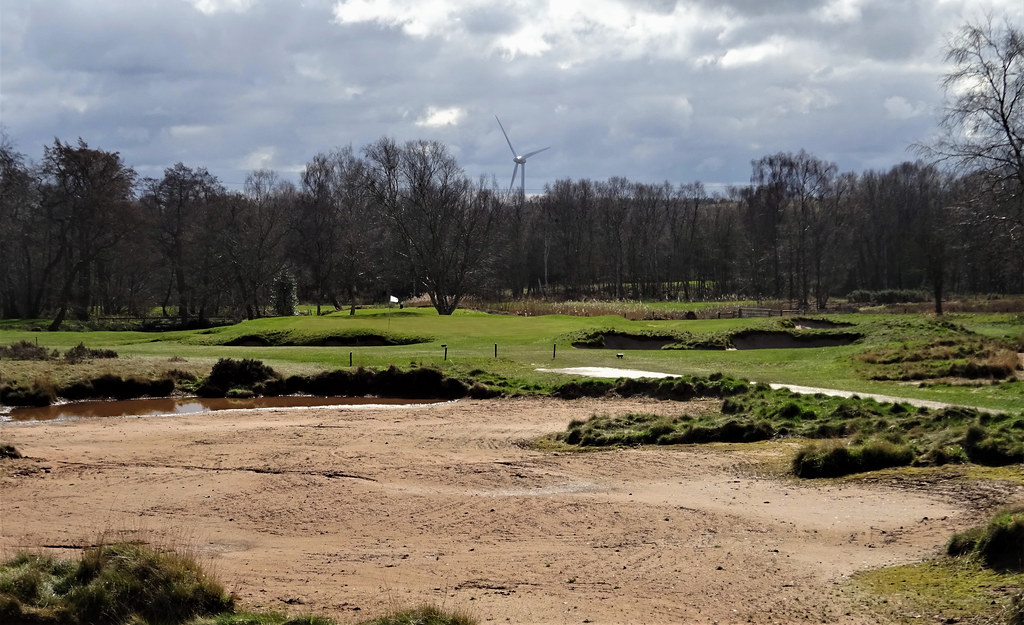
A par five, the rolling straight-away 6th features a large green and a fine example of bunkering creating dead space by not being tucked up to the green. Pearce lugging the spanners after the his second shot.

The green.
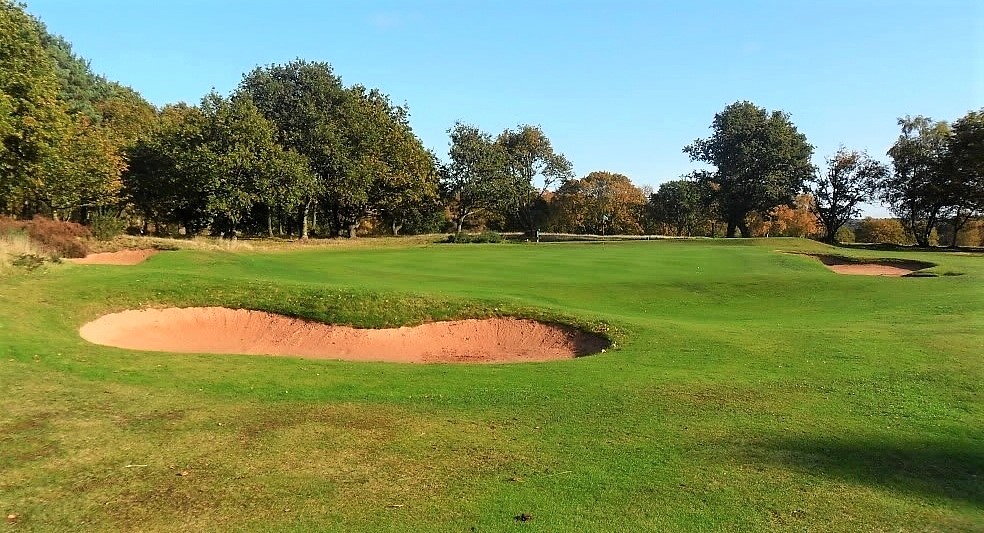
The course then turns for the 7th which plays trickier than it appears. The fairway slopes left and will often leave players with a blind second which must cover a front left bunker.
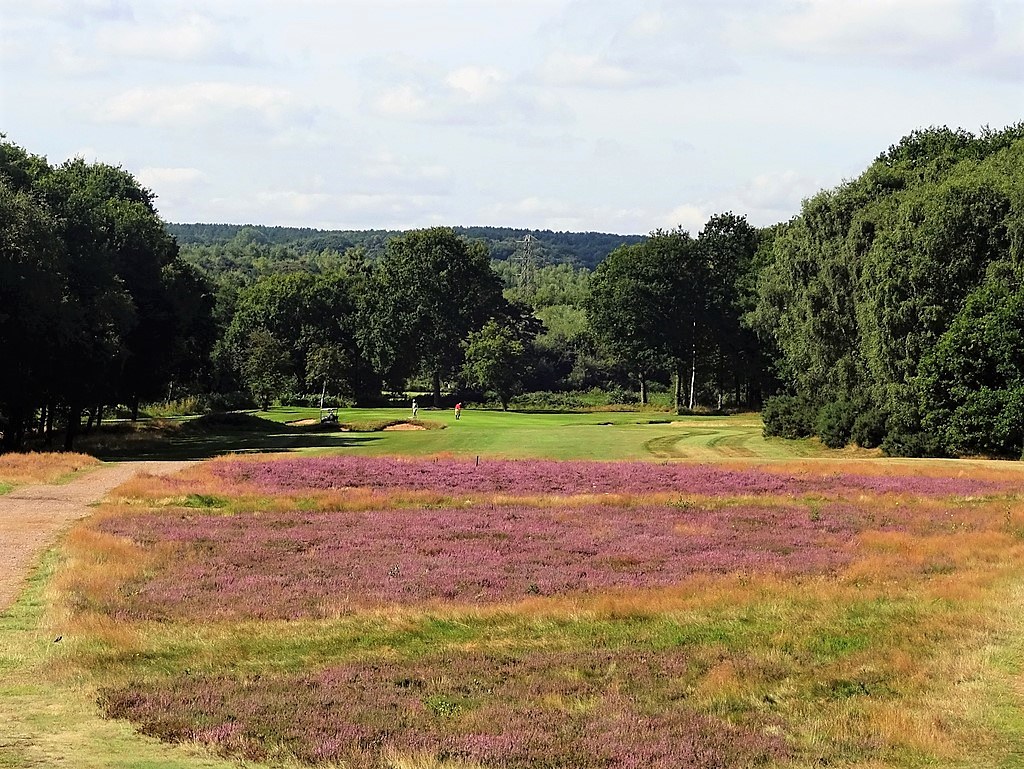
The holywell provides sweet sustenance in preparation to tackle one of the best eleven hole stretches to be found in the British Isles. The two sets of tees on the 8th give the golfer a very different aspect to the drive. Behind the well is the longer version of the hole, but the added length is tempered by a more receptive fairway which leans into the dogleg. The left tee makes the hole dead straight, but the canted short grass shoves drives toward the treed area right of the fairway. The green is dug into the hillside on the left making a missed drive right not as bad as it may seem.
Boonie is the ever generous host.

From the back tee.
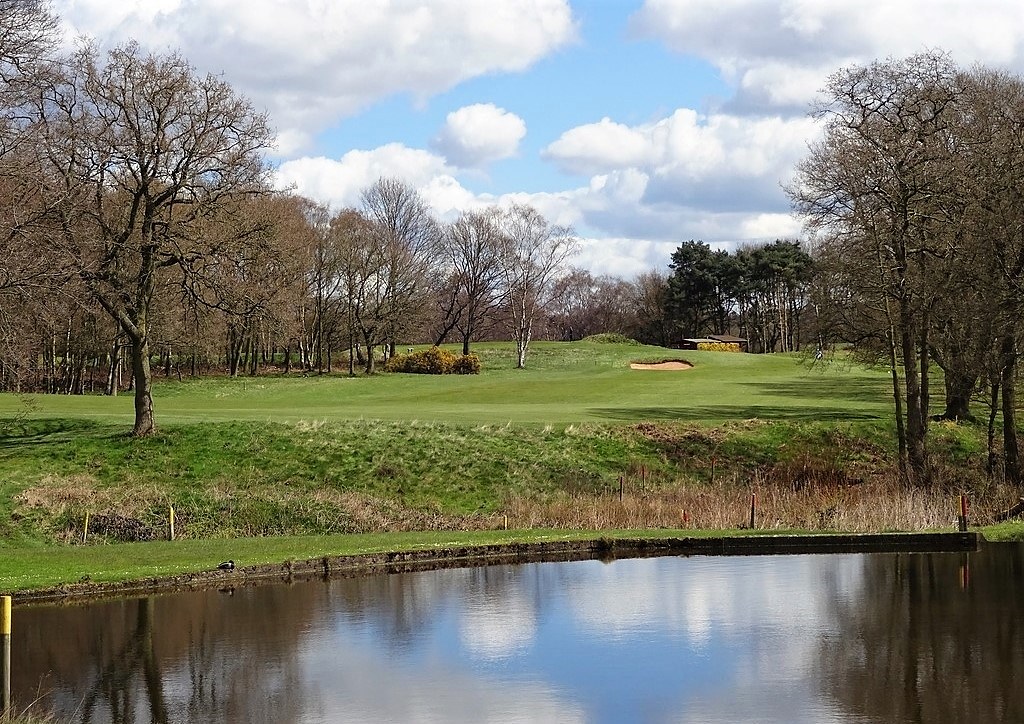
Upon leaving the green we discovered the Hollinwell Halt named after the Hollinwell & Annesley Station (was near the 1st green) which closed down in the early 1960s. The Halt is a last chance to gather provisions before assulting the
hill. Photo by HB Priestly.
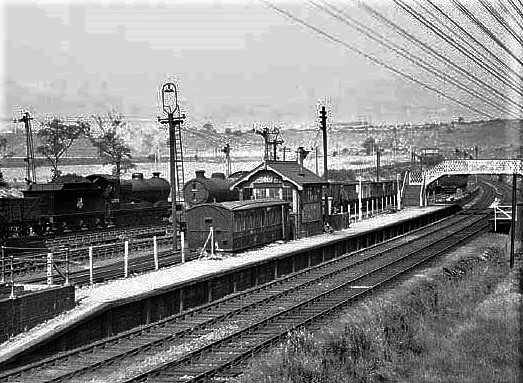
After the short 9th another short par 4 follows. Hitting the fairway is of prime importance hence many will lay-up to the blind driving zone. The complexity of the approach is dependent on where the hole is located on the long green benched into the hillside left.
#9.

#10 tee shot and approach.

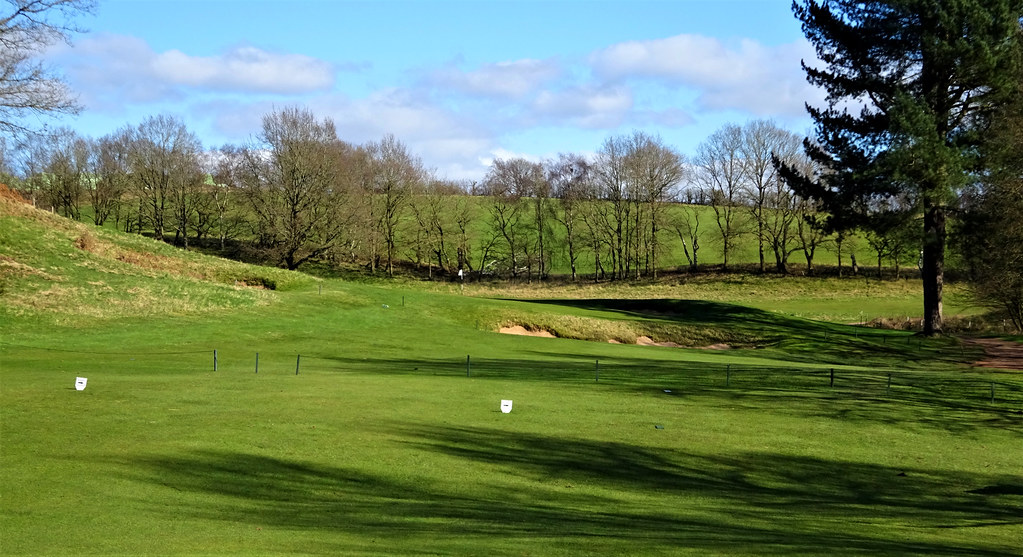
We now attack the hill head-on for the 11th. The narrow fairway snakes up the hill and is an intimidating prospect off the tee. The gorse up the left was recently removed.
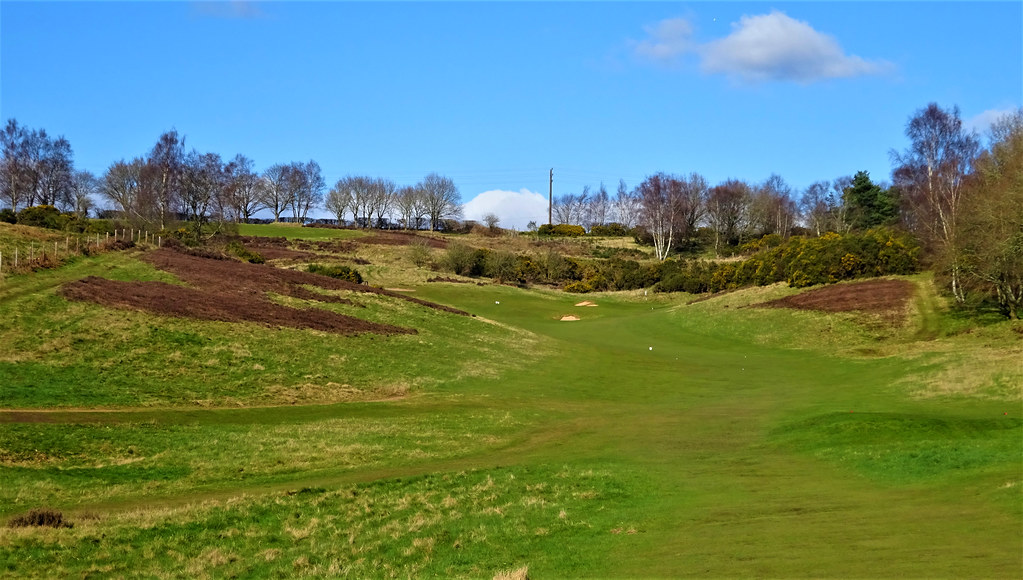
Approaching the small green is no less daunting.

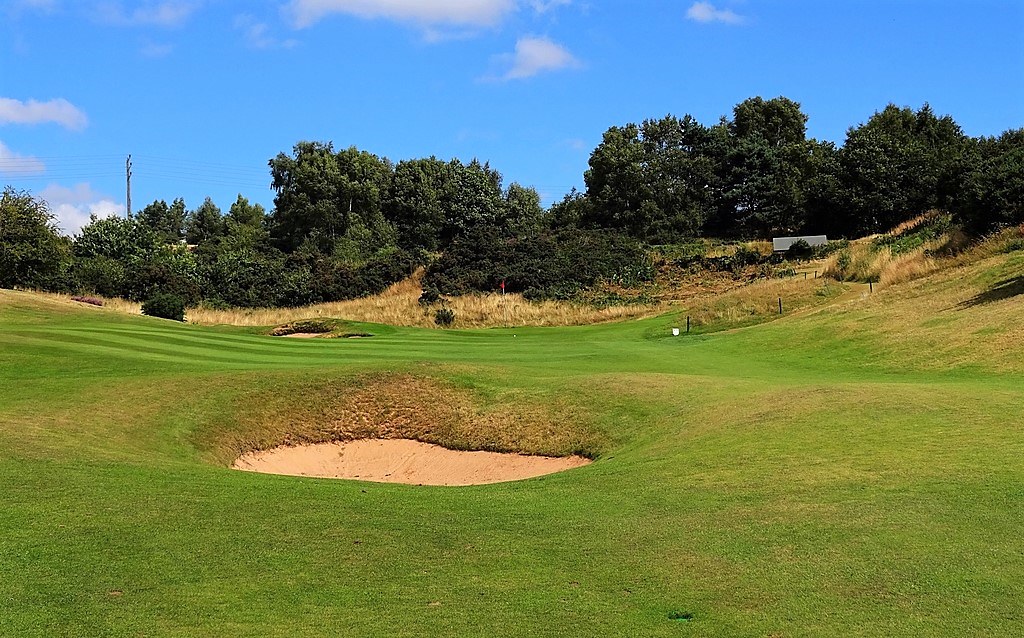
Playing over the top of the hill, the 12th is a brute. The drive disappears from sight and anything down the left will likely find trouble. There is a large dip awaiting should a big drive be in the cards. The difficulty of the obscured approach is tempered by a gathering green. Below is just one of several teeing areas.
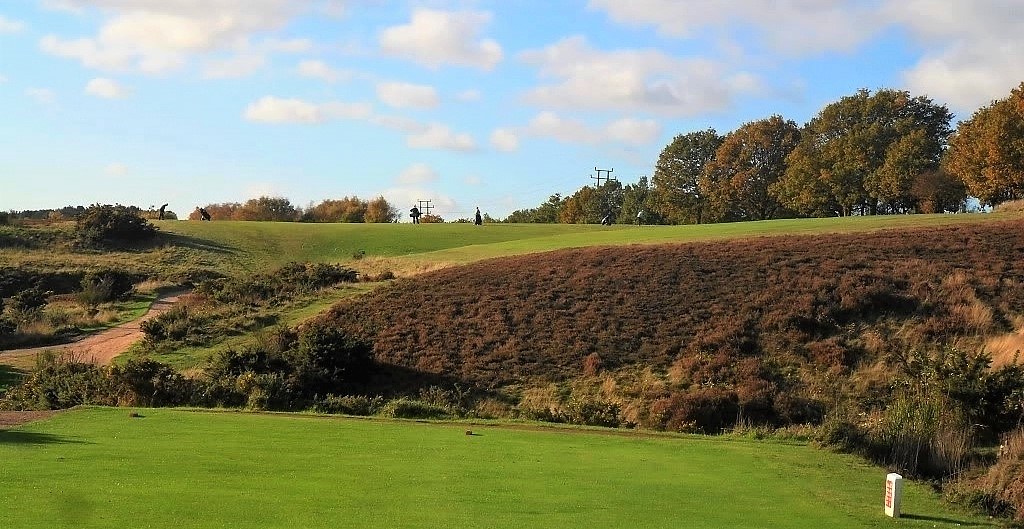
#13 is a well known par 3....photo from half way down the hill. More beautiful views have been opened up here with tree removal. The 14th is in the background left and the 15th right.
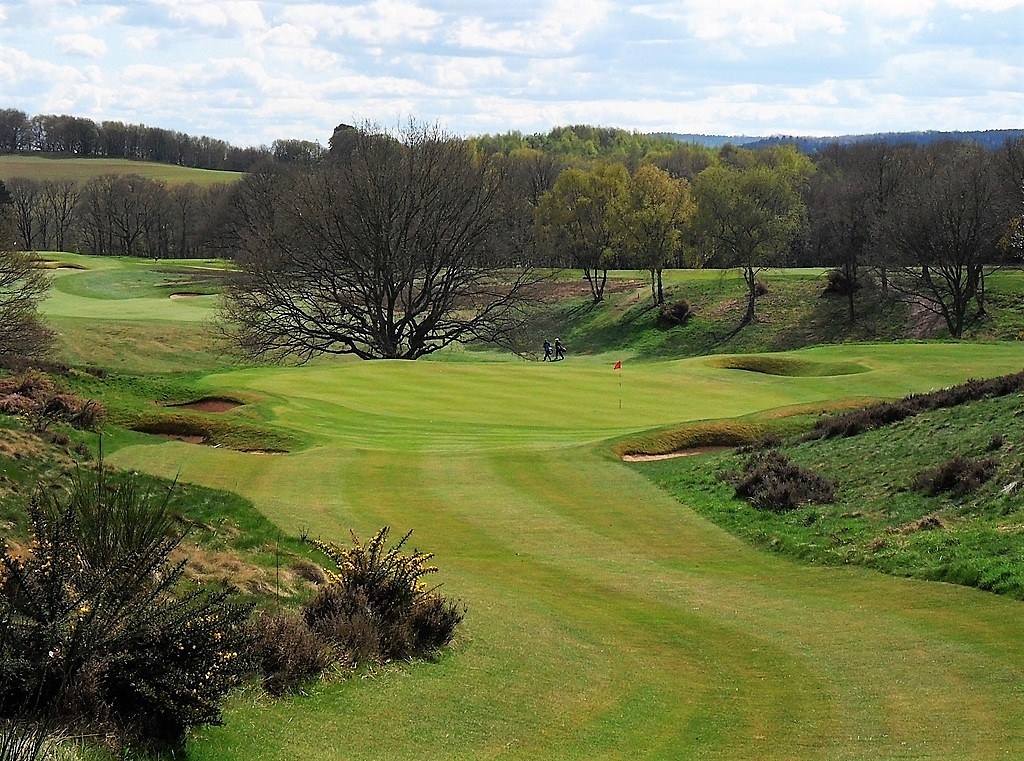
In this photo from behind the 13th the reader gets an idea of the elevation change.

Often times a hole is treated as one which makes up the numbers and holds no particular interest. I have made this mistake for many a year, but now have the highest regard for #14. Not too dissimilar to the 16th, the downhill drive turns right around rough and a corner bunker with the fairway leaking left. A new bunker left has eliminated the bail out option. The tighter one can keep to the turn the more likely the green will be visible for the 2nd. On the other hand, the left side leaves a blind approach for most, but a more open entrance to the plateau green. This is without doubt the sleeper hole at Notts which deserves more accolades. The club has slowly been altering the look of most bunkers to the style seen in this photo.

The tee shot prior to the work.

Taken from the rear of the green, the reader is given a sense of the scale and beauty of the property.

Thinking we are finished with the hill, the course turns about face and gallops up the incline once more. The drive isnít as demanding as on the 11th, but at one time there was a forceful intimidating desert of sand between the tee and left hand fairway bunker. The approach into the spur of the hill may be the most exacting shot at Notts. Below is the approach from the left.

Side view of the green.

There are no prizes for guessing any approach beyond the hole will mean a severely downhill putt comes next. In the States, the green speeds would be so quick as to necessitate flattening the slope of the green. Thank heavens those in GB&I have a more sensible approach to maintenance. On the other hand, I am not too keen on the rough coming down to green level. The gorse seen in this photo has been removed.
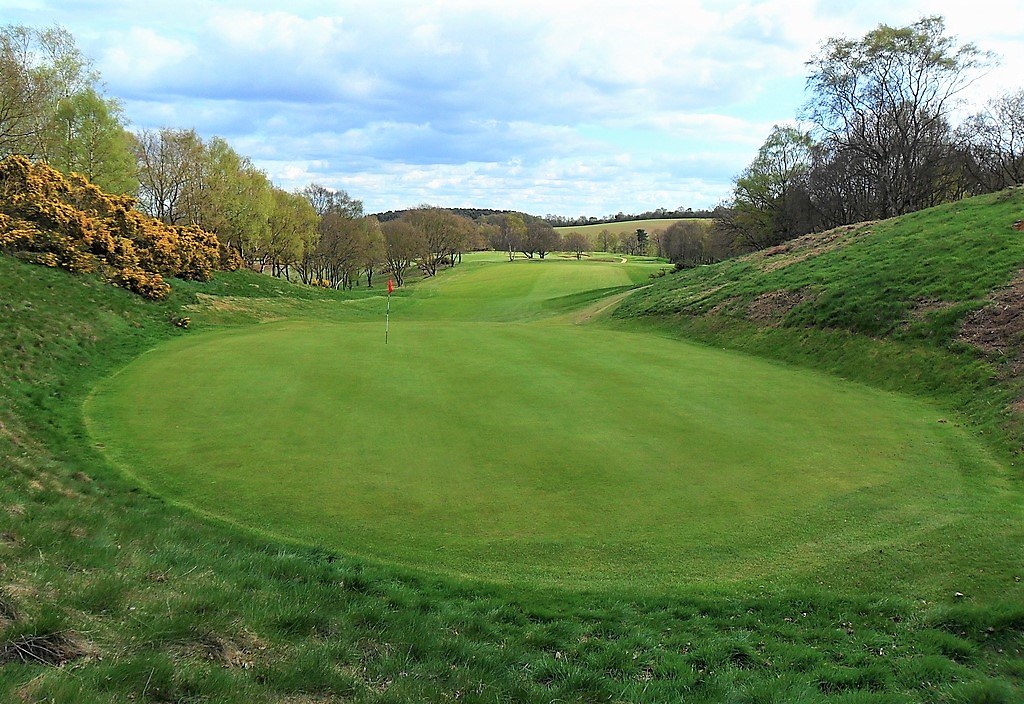
We now leave the heights for the steeply downhill 16th. A reverse dogleg, bunkering covers the corner at the turn to the right. Unless one is very long its best to ease a drive out left and gain good position for the all aerial approach over three fronting bunkers which have recently replaced one long bunker. Below is the drive and a common look at the green from a drive missed right.


The pound seats. I preferred the intensity of the cross bunker to the three new bunkers.

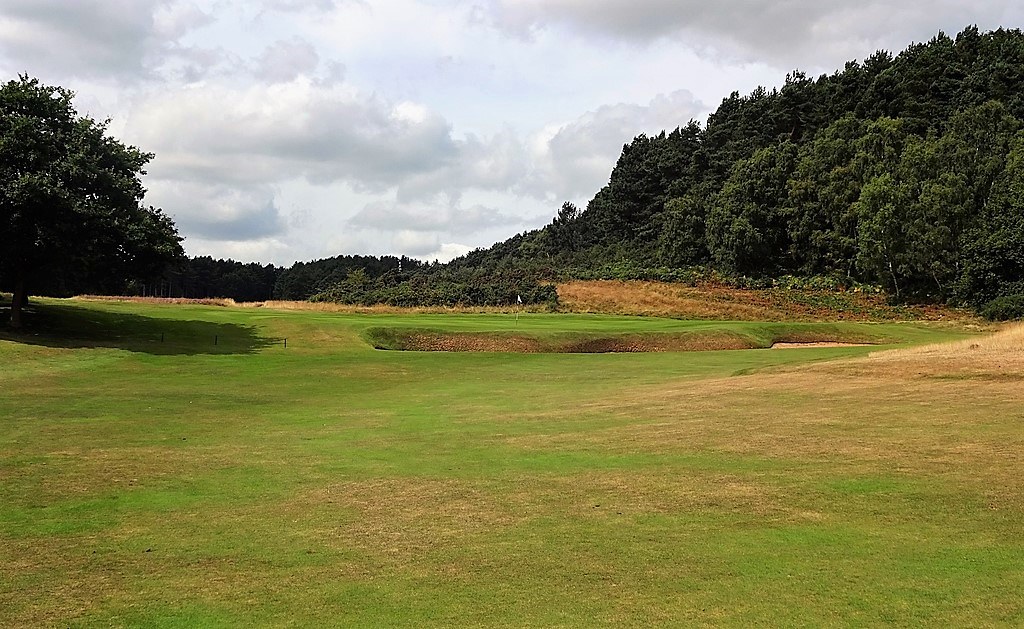
Behind #16 the severity of the land is more evident.

The par 5 penultimate hole features the three best placed bunkers on the course. Protecting the left side of the uphill fairway which leans left and easier access to the green, these pits can end a match in quick order. In the right conditions the green can be had in two. The greens are not generally difficult to negotiate, but this one seems to see less than its fair share of holed putts.
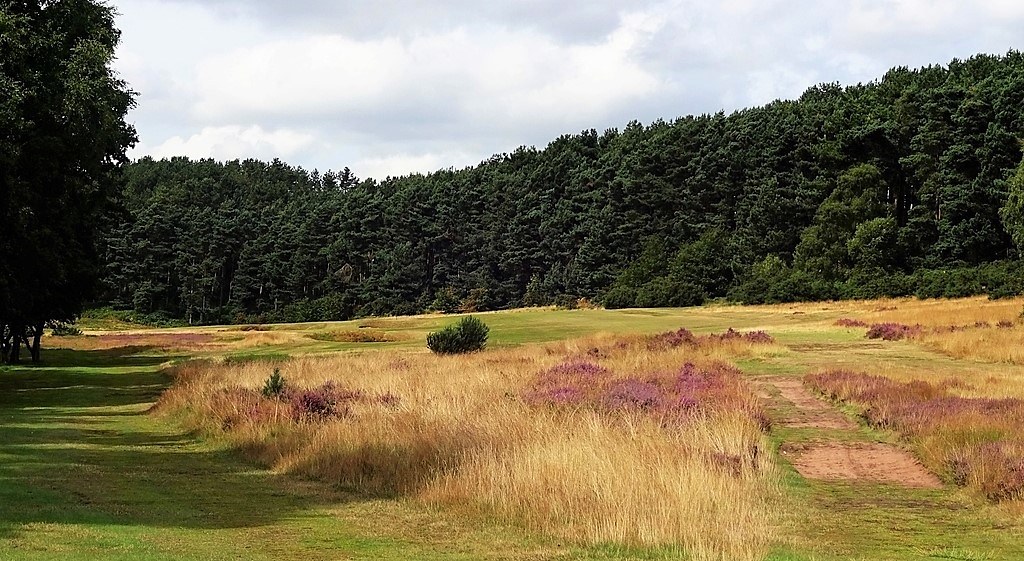

A fine finisher, the 18th is an appealing downhiller played straight at the house windows.

Behind the green.

The stretch of holes between 11 and 16 lifts Notts to a very good course with great variety. The terrain which makes these holes so compelling simply doesn't exist among the class London heathland courses. While there is a small handful of good short holes, perhaps due to its extraordinary length (for England) there are no drivable par 4s. This is a pity, but small beer when we consider the bountiful riches Notts possesses.
It should be no surprise Notts is hoping to host a future Walker Cup. As 2015's Brabazon Trophy demonstrated, the course can certainly provide a stern challenge. More importantly, landing the Walker Cup would be a just reward for the tree/vegetation clearing and poa eliminating efforts made by the club to enhance the true heathland characteristics of Holinwell. Notts comfortably holds its own with most of England's best inland courses. 2024
Ran's Review.
http://golfclubatlas.com/courses-by-country/england/notts1/Ciao